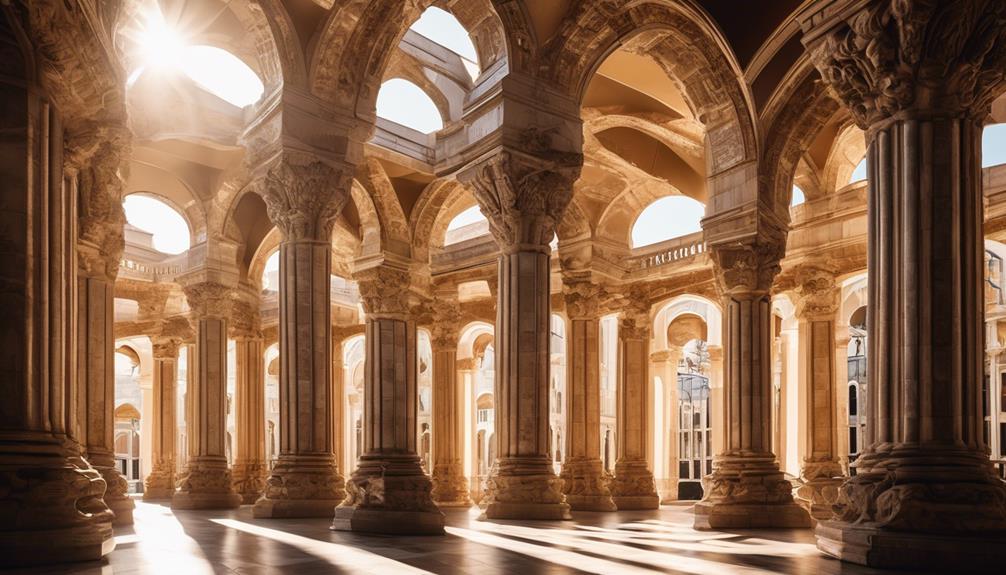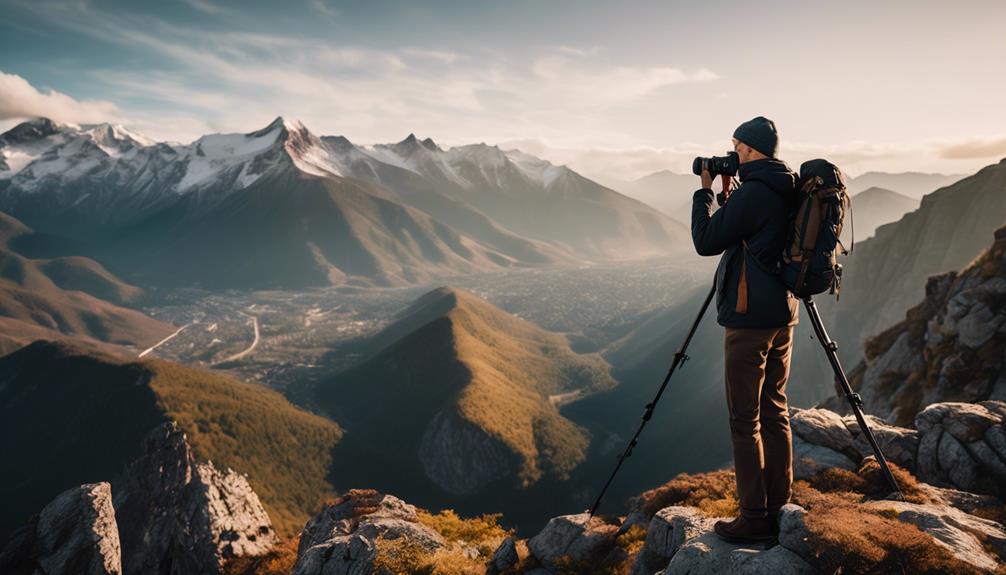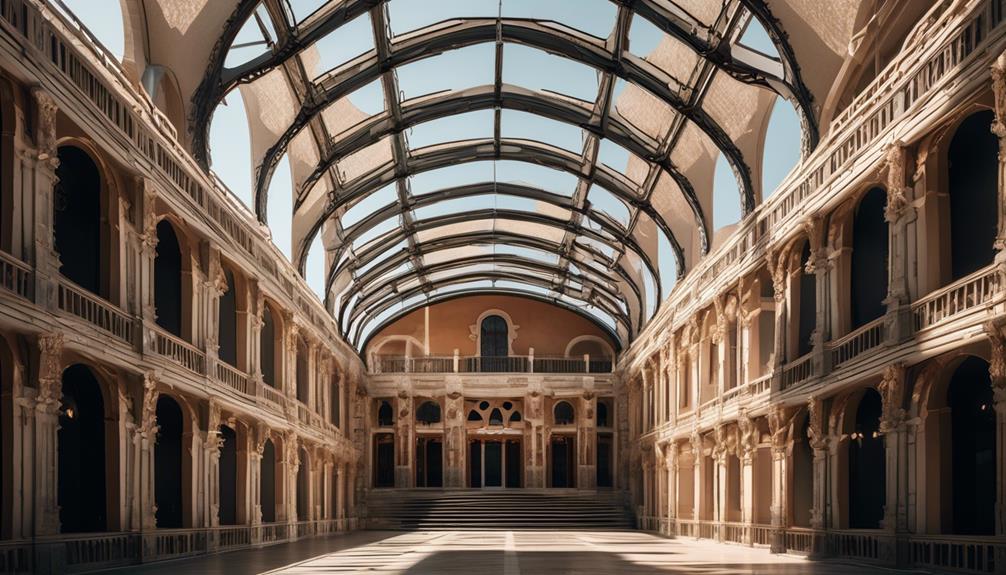Please note this post may contain affiliate links picked by me (Jay) that I have deemed may be of interest or relevant to you the reader of this.
These links do not affect the cost of the thing if you decide to purchase but i may get a little money if you choose to purchase.
For more information on my affiliate link policy click here.
Architectural photography is like a key that unlocks a hidden world of striking images. Just like a skilled chef combines flavors to create a memorable dish, learning architectural photography principles allows you to blend composition, lighting, and perspective to capture stunning photographs that leave a lasting impression.
But why should you bother learning these principles? Well, imagine being able to enhance your composition skills, capture intricate architectural details with precision, and understand how to manipulate lighting to showcase the beauty of buildings. Not only will it elevate your photography to new heights, but it can also open doors to exciting career opportunities and help you develop a unique artistic perspective that sets you apart from the crowd.
So, are you ready to embark on a journey that will transform the way you see and capture the world around you?
Key Takeaways
- Learning architectural photography principles can enhance your composition skills by incorporating elements that create visual interest and lead the viewer's eye through the frame.
- Mastering architectural photography principles allows you to capture stunning architectural details by improving framing techniques and experimenting with different angles and perspectives.
- Understanding lighting techniques for buildings can help you create dramatic effects, showcase buildings in a new light, and capture the ambiance and mood.
- By developing a unique artistic perspective and incorporating architectural history, you can create visually stunning photographs that tell a story and position yourself as a versatile and in-demand photographer.
Enhance Your Composition Skills
To improve your architectural photography composition skills, focus on incorporating elements that create visual interest and lead the viewer's eye through the frame. One way to do this is by improving your framing techniques. Consider the placement of the subject within the frame and how it interacts with the surrounding elements. Experiment with different angles and perspectives to find the most compelling composition.
Another aspect to explore is the architectural styles themselves. Each style has its own unique characteristics and features that can add depth and interest to your photographs. Whether it's the intricate details of Gothic architecture or the clean lines of modern design, understanding and capturing these elements can greatly enhance the overall composition of your images.
Additionally, don't be afraid to play with light and shadow. The interplay between light and architecture can create dramatic effects and add a sense of dimension to your photographs. Experiment with different times of day and lighting conditions to capture the mood and atmosphere of the scene.
Capture Stunning Architectural Details
As I hone my composition skills in architectural photography, I can't help but be captivated by the stunning details that bring these structures to life. Capturing these intricate architectural details requires a careful understanding of the techniques and gear specific to architectural photography.
To capture stunning architectural details, one must first master the art of composition. Framing the subject in a visually appealing and balanced way is essential. Paying attention to lines, shapes, and patterns can help create a dynamic and engaging composition. Additionally, experimenting with different angles and perspectives can bring out the unique features of the architecture.
When it comes to gear, investing in the right equipment is crucial. Wide-angle lenses are commonly used in architectural photography as they allow you to capture the grandeur and scale of the structures. Tripods are also essential for keeping your camera steady and ensuring sharp images, especially when shooting in low light conditions.
In addition to mastering composition and having the right gear, understanding lighting is key. The way light interacts with the architecture can highlight textures, shadows, and details. Experimenting with different lighting conditions, such as golden hour or twilight, can result in breathtaking images.
Understand Lighting Techniques for Buildings
Understanding the interplay between light and architecture is essential for creating captivating and visually striking photographs of buildings. As an architectural photographer, I've learned that lighting techniques play a crucial role in enhancing the beauty and character of a building. Whether it's capturing the intricate details of a historical monument or highlighting the sleek lines of a modern structure, mastering lighting techniques can take your photography to the next level.
One important aspect to consider is night photography. Shooting buildings at night can create a dramatic and mysterious atmosphere, showcasing the building in a whole new light. By using long exposure techniques and strategically placing light sources, you can create stunning images that emphasize the building's unique features and create a sense of wonder.
Another aspect to explore is interior design. When photographing the interior of a building, it's important to consider the natural and artificial lighting sources. Understanding how light interacts with different materials and textures can help you capture the ambiance and mood of the space. By experimenting with different lighting setups and angles, you can highlight architectural elements and create visually appealing images.
Develop a Unique Artistic Perspective
How can you develop a unique artistic perspective in architectural photography?
One way is to explore architectural history. By delving into the rich architectural heritage of different cultures and time periods, you can gain a deeper understanding of the artistic principles and design elements that have shaped buildings throughout history. This knowledge can inspire you to approach your photography with a fresh and innovative perspective.
Another way to develop a unique artistic perspective is to experiment with different angles. Don't be afraid to get down low or climb up high to capture a building from a unique vantage point. By exploring different angles, you can highlight interesting details, create depth, and add a sense of drama to your photographs.
Incorporating these two techniques – exploring architectural history and experimenting with different angles – can help you develop a style that's truly your own. By combining your knowledge of architectural principles with your creative vision, you can create photographs that aren't only visually stunning but also tell a story about the building and its place in the world.
Expand Your Photography Career Opportunities
Expanding your photography career opportunities can open up new doors and allow you to showcase your skills in a variety of settings. As a photographer, it's crucial to constantly seek career advancement and professional growth.
By learning architectural photography principles, you can position yourself as a versatile and in-demand photographer. Architectural photography isn't just about capturing buildings; it's about capturing the essence and beauty of the built environment. This skillset is highly valued in the industry, as it allows you to work on a wide range of projects.
From photographing iconic landmarks to documenting the work of talented architects, architectural photography offers endless possibilities for creative expression. By mastering architectural photography principles, you can diversify your portfolio and attract new clients. Real estate agents, interior designers, and construction companies are just a few examples of potential clients who value high-quality architectural photography.
Frequently Asked Questions
What Are Some Common Mistakes to Avoid When Composing Architectural Photographs?
When it comes to composing architectural photographs, there are a few common mistakes that you'll want to avoid.
One is forgetting about the rule of thirds, which can help create a more balanced and visually appealing composition.
Another mistake isn't taking the time to carefully consider the angles and perspectives you're shooting from.
How Can I Effectively Capture the Intricate Details of a Building's Design?
To effectively capture the intricate details of a building's design, I focus on two key elements: capturing reflections and emphasizing textures.
Reflections can add depth and interest to a photograph, highlighting the unique features of the building. By positioning myself and my camera strategically, I can capture these reflections in a visually appealing way.
Additionally, emphasizing textures brings out the architectural details, giving the photograph a tactile quality. Learning these principles allows me to create innovative and captivating images of architectural designs.
Are There Specific Lighting Techniques That Work Best for Photographing Architecture?
When it comes to photographing architecture, understanding specific lighting techniques is crucial. Whether it's capturing the intricate details of a building's design or creating stunning night photography, knowing how to work with natural lighting can make all the difference.
Learning architectural photography principles not only allows you to showcase buildings in their best light, but it also opens up a world of innovation and creativity. So if you're looking to elevate your photography skills and capture the essence of architectural marvels, mastering these principles is a must.
How Can I Cultivate a Unique Artistic Perspective in My Architectural Photography?
To cultivate a unique artistic perspective in my architectural photography, I explore unconventional techniques and experiment with artistic composition. By thinking outside the box, I can capture buildings in a way that showcases their beauty and tells a story.
It's all about finding the right angles, playing with light and shadow, and incorporating interesting elements into the frame. Learning architectural photography principles allows me to push boundaries, stand out from the crowd, and create visually stunning images that leave a lasting impression.
What Are Some Potential Career Paths or Opportunities for Photographers Specializing in Architectural Photography?
Potential clients for photographers specializing in architectural photography include:
- Real estate developers
- Architects
- Interior designers
- Construction companies
To excel in this field, it's important to understand the principles of architectural photography, such as:
- Composition
- Lighting
- Perspective
Specialized equipment, such as tilt-shift lenses and tripods, is often necessary to capture the intricate details of buildings.
Conclusion
So, why bother learning architectural photography principles?
Well, if you're content with taking average photos and blending into the crowd, then by all means, skip it. But if you want to elevate your photography game, capture breathtaking details, and stand out from the pack, then dive right in.
Understanding composition, lighting, and developing your own artistic perspective won't only enhance your skills but also open up a world of new opportunities in your photography career.
Trust me, it's worth it.


